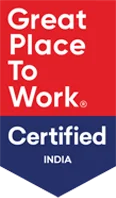Case Study
Modernizing a legacy inventory management system for a UK based automobile OEM firm
Services Used:
The client is a leading provider of stock management software solutions for Original Equipment Manufacturers (OEM), retailers and e-commerce portals dealing in both used and new vehicles in the UK. The client also provides software solutions for inventory management, data enrichment, marketing, insurance management and retailing for the automobile industry.
The Situation
With constantly changing business dynamics, it becomes imperative to keep your software systems adapt to change. The software systems can make or break your ability to adapt, grow and remain competitive.
The client had a proprietary Vehicle Inventory Management System (VIMS) which was a platform for OEMs to view, edit and manage their inventory that was leased out to various entities on a contractual basis. The system was limited in terms of how it could help the client achieve their business objectives. For instance, It could serve only a single client’s inventory management workflow at a time and could only maintain the data of used cars with UK government registration numbers. The data of freshly manufactured vehicles having only a Chassis Number or Vehicle Identification Number (VIN) could not be maintained on it.
With these limitations pertaining to their VIMS, the client wanted to modernize the existing solution. The modernized VIMS was to be modeled after real world tasks in the automobile industry to accommodate intra-linking among multiple clients. The client’s expectations from the software solution were to:
- Orchestrate a new application architecture that could handle multiple concurrent users and scale up or down as per business needs
- Redesign the system UI/UX and make it intuitive to use for the users
- Create a multi-nodal system in order to handle multiple clients and users with different job roles could branch out from each client node
- Provide a provision to have information about freshly manufactured unregistered vehicles and not just used ones
- Integrate modules for inventory management, image management, user and operations management
- Add mapping tools within the VIMS and design a reliable, easy-to-understand UI for inventory management
The Solution
The Daffodil team began the development by planning out the best way to create new users, multiple types of clients, and accommodate multiple vehicle types. They had a series of meetings and brainstorming sessions with the team at the client’s end. Team Daffodil innovated extensively to help the client understand what their business really needed. After continuous deliberations, the team was able to assist the client to concretize their technical and functional expectations from the final software solution.

An intra-linked user hierarchy was created for several OEMs, groups and sites to be added to the system. The hierarchy in the software system was in line with the functioning of vehicle inventory management in the physical world. To further bridge the differences between the physical automotive industry and the VIMS, new business rules were formulated which were not in existence for such software systems. These rules would eliminate marketing conflicts when several brands at a single site would be added to the system. In addition, user access would now be directed to the appropriate brand to avoid access conflicts.

In the former system, only the VIN and Vehicle Registration Number (VRN) could be used to fetch vehicle details. This would not allow a search for vehicles for which only orders have been placed (as these only had Order IDs assigned to them). In the modernized VIMS, details of vehicles in various stages of readiness – with VIN, VRN, or Order ID – can now be fetched. A new image library was created with Azure Blob which allowed vehicle images to be uploaded in bulk. Instead of linking images with vehicles individually at the time of uploading, this can be done later, providing easy image management.

Blazor WebAssembly, a relatively new UI development technology, was used for seamless code sharing between the back-end and the UI, reducing time-to-market. The development was highly Agile and productive, by hosting web services on a hybrid cloud computing environment. Because of this, identity management for multiple clients was made simpler. Because of hybrid cloud hosting, the future scaling of workloads for the addition of several more clients would not incur extra costs or effort.

The Impact
OEMs, groups and other automotive industry entities getting onboarded onto the client’s VIMS would reap the benefits of the newly introduced comprehensive intra-user hierarchy. This is because simultaneous inventory management of multiple types of workflows is more streamlined than before. Currently, in the form of a web application, the VIMS can smoothly transition to other platforms when the need arises. The client was able to onboard 2 new clients onto the VIMS within a week of the launch of the new system. Both clients had completely different workflows but could simultaneously manage their inventories with ease on the same system.
“Very happy with the way the team is picking up the complex concepts related to the automobile industry and thinking of alternate ways of doing what is needed. We have been particularly impressed with the team’s great work ethic; they are giving excellent results.”
The CEO
Related Case Studies
Get in Touch
Sign up for a 30 min no-obligation strategic session with us
Let us understand your business objectives, set up initial milestones, and plan your software project.
At the end of this 30 min session, walk out with:
- Validation of your project idea/ scope of your project
- Actionable insights on which technology would suit your requirements
- Industry specific best practices that can be applied to your project
- Implementation and engagement plan of action
- Ballpark estimate and time-frame for development








